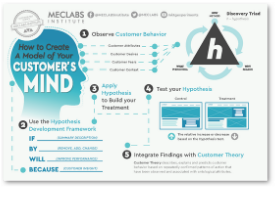Should you consider trademarking your email newsletter subject line-style? Unlike print publications and Web sites that can use
graphics and colors for immediate visual branding, email newsletter publishers only have two tiny text-only items. Your subject line and your from line.
Recipients scroll through dozens, even hundreds, of emails daily looking mainly for “what can I delete?” Establishing a brand stance in both has become imperative to open rates, readership, clicks. As we all know, many email recipients look at subject line first, and then only glance at from line if they are not sure if they should open the message.
This was brought home abruptly to me this week when a competitor to our other publications sent out an issue using a subject line
that was strikingly similar to our typical subject lines.
Examples of our recent subject lines:
CASE STUDY: 5 Email Newsletter Publishing Rules
CASE STUDY: Redesigning Your Site to Get More Sales Leads
CASE STUDY: Viral Marketing Online – Ecards, Email & Petitions CASE STUDY: Lands’ End Newsletter Results
CASE STUDY: Reach Biz Purchasing Depts Online
Notice a pattern? Yeah, it is on purpose. I figured lots of people do not look at “from,” they just glance at subject first to seen
what to delete or keep. If we started every single newsletter the same exact way, it would help our fans deal with their inboxes. Then, this week a competitor sent out an issue with the subject line:
CASE STUDY: Copy & Design Makeover Increases Site Revenues by 30
Percent
Almost immediately we began getting emails from our readers. One wanted to know if we had been bought by that competitor. One wanted to know if we were now publishing thatcompetitor. The third simply said, “Thought you should know they are trying to rip you off.” Other readers let us know they had set up filters
on their email, and anything with “CASE STUDY:” was automatically sucked off into their MarketingSherpa email folder. They were a little annoyed that something else had ended up there.
We contacted the publisher who did not share our concern about our publications being mistaken for each other. (They did not say,
“Why get your panties in a twist?” but it was implied.) Then when we contacted our lawyer who specializes in publishing
companies and who is known for being very levelheaded, we were advised that this could be a trademark violation.
Which brings me to the point. Subject lines matter. Consistent subject lines that are not boring (i.e. not “Sherpa Case Study
May 17, Vol III Issue 17),” and somehow build your brand, are critical to success in email publishing. They are, in effect, part of your logo. How long will it take the law to catch up to this? Goodness knows and I certainly do not want to be the one spending the money to create the precedent.








